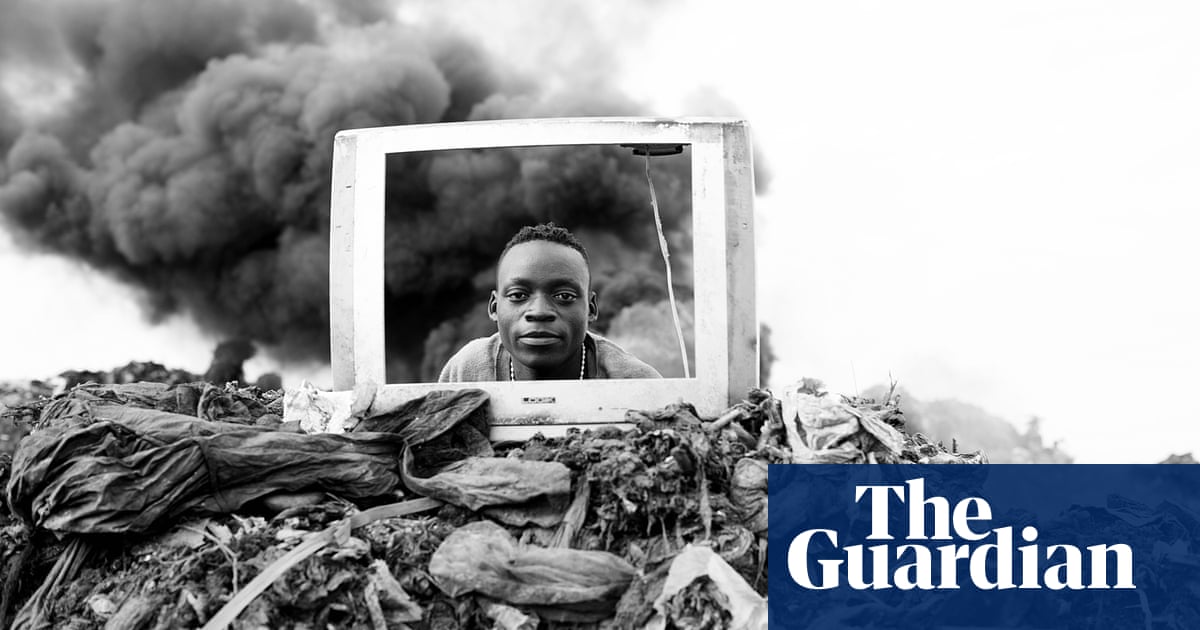
n 1985, I was in line at a Hüsker Dü concert and started talking to this guy who had started a fanzine. I had no idea what a fanzine was but I loved music and saw an opportunity to go to shows for free. I latched on to the fanzine and started shooting bands like Black Flag and Sonic Youth, then went on to work for magazines such as [skateboarding title] Thrasher. After a few years, I decided to finish my photography degree. So, at 22, I called my editors and I said: “I’m retiring.”
I finished my degree before literally running away to join a circus. I landed in Portland, Oregon. I was working in a cafe when I met this band, Heatmiser, which Elliott Smith was in. We became friends and we used to hang out, cook meals and watch TV.
In 1992, I went to London. I got off the tube and heard my name. I turned around and there was Nirvana, who I’d photographed. They said: “Hey we’re going to Reading festival, come along.” So I went and ended up at a legendary show. Of all of the people to be backstage was the guy I had met in line five years earlier who had taken me down this wild road. I had this moment of clarity like, oh my God, this is my life, these are my people. So I threw myself back into music.
I started managing Heatmiser and shot all their publicity photos. They were a fun, smart, cute and light-hearted bunch. Everybody was used to me shoving a camera in their face. I was a friend with a camera, I wasn’t a journalist. This photo was taken on tour in Vancouver. What I love about it is it’s well exposed and it captures an intimacy that you’re looking for in a portrait. It’s a very casual photo and you can tell Elliott is relaxed.
I’m determined to show something about Elliott that I feel the media didn’t. He was a fantastically clever person with a terrific sense of humour and a huge heart. There was this cult of personality around him – the dark, tortured figure – but in this picture that tip of the hat, that little smile, and that sideways glance: that’s the actual person, not a marketing image.
Heatmiser broke up and we all kind of splintered. Mine and Elliott’s relationship got convoluted and I moved away. My photographs were used on the front cover of his first two solo albums. They were just photos of mine that he loved, they weren’t shot specifically.
I saw what was happening to Elliott from a distance. I felt that the media was encouraging him to go down a dark path. This is kind of the legend of Kurt Cobain as well. Artists like them are permitted to engage in behaviours that might normally be curtailed if somebody else didn’t have thousands of dollars invested in marketing them to be a thing.
I was interested in what Elliott was doing as a solo artist, but when drugs get involved that changes things. It becomes harder to support someone and he was surrounded by enablers. We were too far gone as friends and I remember feeling like I couldn’t help and things were out of control.
I wasn’t around when Elliott died [in 2003, aged 34]. I was living on an island in Massachusetts with a toddler and a newborn. I didn’t get that opportunity to be with the people that I loved, who also loved him. When your friend kills himself you go through different seasons of how to manage it emotionally but you never recover from it.
For a very long time I couldn’t listen to him, I couldn’t talk about him, I couldn’t look at the pictures I took. I have come to a place of peace now where I feel grateful for Elliott, for having had that friendship and to have had that time in my life. Not everyone gets the level of artistic freedom I had.
• Elliott Smith: Expanded 25th Anniversary Edition, with a 52-page photo book by JJ Gonson is out on 28 August via Kill Rock Stars.
JJ Gonson’s CV
Born: 28 November, 1966, Boston, Massachusetts.
Studied: Photography and education at the School of the Museum of Fine Arts in Boston; education degree from Tufts University to teach photography.
Influences: Diane Arbus, Danny Lyon, Bill Burke, Mick Rock, Henri Cartier-Bresson, Dorothea Lange.
High point: “Receiving my first SLR camera, a Minolta, from my grandmother when I was 13.”
Low point: “Film labs closing and processing becoming more expensive and harder to access as digital imaging has taken over.”
Top tip: “F/8 and be there.”
• Elliott Smith: Expanded 25th Anniversary Edition, with a 52-page photo book by JJ Gonson is out on 28 August via Kill Rock Stars.
In the UK the Samaritans can be contacted on 116 123. In the US, the National Suicide Prevention Lifeline is 1-800-273-8255. In Australia, the crisis support service Lifeline is on 13 11 14. Other international suicide helplines can be found at www.befrienders.org.












